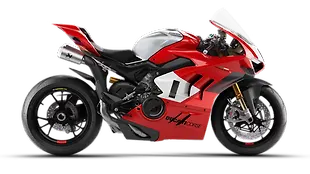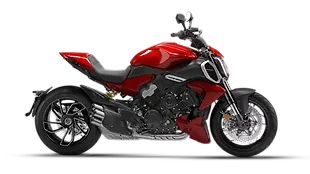Introduction

I’m a sucker for off-road training school. Because I have realised, it’s truly important to learn skills from the best and practice it regularly. I attended the Great Trail Adventure this June and managed to gain some incredible knowledge on the Royal Enfield Himalayan. But when Ducati invited us to attend their first ever off-road DRE, I quickly grabbed the opportunity. Why? I had a Ducati to do some drills and that means more pressure. But I had to overcome this fear of going off-road with big bikes.
The DRE was conducted at Off-Road Adventure Zone in Gurgaon. The planning, drills and the course – they were all part of DRE’s level 1 training. Our trainer is a very well-known biker, Vijay Parmar, who is also the Ducati DRE certified trainer. The half-day training started with some briefing and the basics of off-roading. So things like right body positioning, various features of Ducati Multistrada and rules of the track were explained. While other participants were getting ready to hit the dirt, I was sceptical about the brand new Multistrada 1260S that was going to be handed over to me for this event. But it didn’t take long for me to opt for a much safer option – the Multistrada 1200 Enduro. You read that right!
Drills
Slaloms

How does it help?
Adventure riding is all about exploring new terrains and riding on new places. This could prove to be an enlightening experience but without the right skills, it could be dangerous. At such trails, there will be tight turns and obstacles. The slalom drill helps you with the right balance and patience to get through difficult terrains.
Cheat to do it right!
As I had mentioned earlier, to get the slalom right, the body positioning needs to be worked upon as that will help you get through the trails with ease. The idea is to move the upper body to the opposite side of the turn. So if you want to go right, slide your upper body to the left. But this needs to be done by holding the motorcycle with the knees and they need to be parallel to each other and should point at the same direction as the turn. The idea is to tilt the motorcycle and not turn it using the handlebar.
Right long U-Turns

How does it help?
This drill was not a part of the event, but Vijay noticed during slaloms that most of the trainees were not looking ahead as their focus was on the end of the front wheel. To overcome this habit, we were asked to stand up and ride around a small hill. And if possible, were asked to take the inside line.
Cheat to do it right!
It’s actually quite simple. You got to stand on the balls of your feet, move the body ahead and let your knees extend ahead of the tank. That way, the overall standing-up ergonomics makes it easy to look ahead and ride. I messed up the first few rounds, but constant feedback from Vijay Parmar helped me get this technique right.
Failed uphill recovery

How does it help?
Riding up a hill on a big ADV is a part and parcel of trail riding. But things gets messed up in case the motorcycle stalls while riding uphill. Without the development of this skill, the confidence level of the rider will be minimal, and in case the rider is going solo, chances are he or she will never ride uphill. So we were taught how to safely bring the bike back to the ground in case the bike stalls while going uphill. During this exercise, the rider needs to be on the saddle.
Cheat to do it right!
We were asked to stall the bike in the gear just as we were reach the top of the hill. Before proceeding, the rider needs to have his feet flat on the ground, upper body should be forward and two fingers on the clutch lever. Then use the clutch momentarily and let the bike roll down. But this action shouldn’t be continuous. The rider needs to use the clutch on and off to keep things in control and avoid panic in case of unnecessary bike actions.
Uphill and Downhill

How does it help?
Riding uphill and downhill is part of the adventure and a rider is bound to encounter such scenarios when he or she is out in the wild.
Cheat to do it right!
It’s all about the weight transfer. While riding uphill, the rider needs to shift his body weight forward, so there’s maximum traction on the front wheel. This technique not only gives one more control over the bike, it also avoids some unplanned wheelies in case of a jerky throttle. Also, the rider needs to look up while performing this drill. While doing down, the rider needs to shift the weight to the back.
Slush Pit

How does it help?
Due to slushy terrain, loose mud and an unpredictable situation, we panic, especially if there’s a big bike involved. This drill, if performed accurately, will help the rider overcome the fear of riding through slush or ruts.
Cheat to do it right!
Here, the weight needs to be on the front wheel to maximise the traction. That way, the motorcycle keeps moving ahead without any drama. In case of big bikes, it’s better to switch off the traction control system to avoid necessary movements that happen when the system kicks in. Throttle control is equally important.
Panic Braking

How does it help?
It helps you save yourself and the motorcycle in case there’s any unexpected obstacle or mishap ahead of you.
Cheat to do it right!
Most of us know that the most effective braking on the road comes from the front brake. It’s the same story on dirt. But both front and rear brakes need to be used in tandem to have the shortest braking distance possible. So while doing this, the rider needs to shift his body to the back to compensate for heavy front braking. If you don’t do it, there’s a high chance you will perform a nose-wheelie.
Balance Beam

How does it help?
It helps you ride with intense focus and on the right path.
Cheat to do it right!
The only way to ride through the balance beam is by looking ahead and at the exit point. That’s the only way to survive it. Learned from my experience.
Free Practice Session

We were given an open land which was carefully marked to practice all the skills we learned that morning. Because the more we practice, the more we learn and adopt the skills.
Conclusion

The training was done by 2PM and was followed by certificate distribution. By the end of the session, all the trainees including me were far more comfortable handling big bikes on the dirt and playing with it. The DRE Off-Road Days Level 1 was a well-managed and executed event. In fact, I would have loved to see this half-day event extending to a full-day one in future, so we could spend some more time in the dirt with a trainer like Vijay Parmar and experience the world of Ducati.
Gallery
1/12
Ducati DRE Off-Road Days: Exploring the dirt with big Ducatis
Double Tap to Zoom











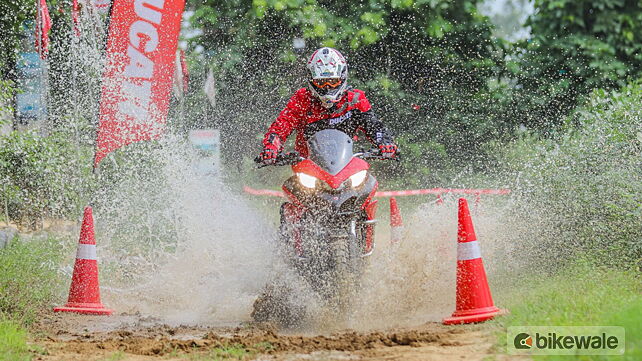









![Ducati Multistrada 1260 [2018-2019] Image Ducati Multistrada 1260 [2018-2019] Image](https://imgd.aeplcdn.com/272x153/bw/models/ducati-multistrada-1260-standard20190724185648.jpg?q=80)
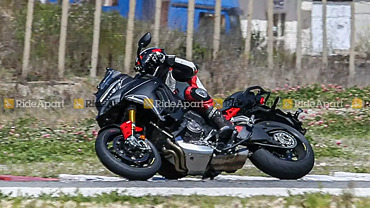
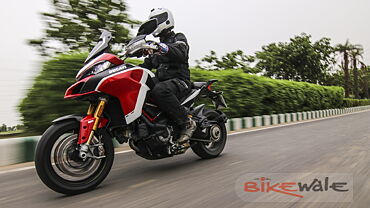

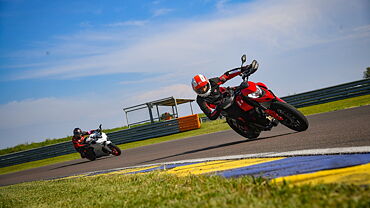
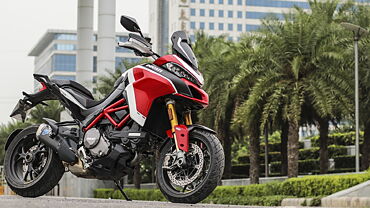
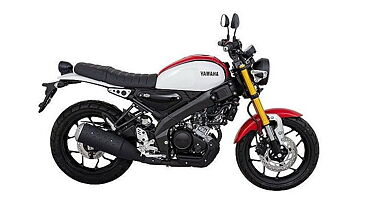

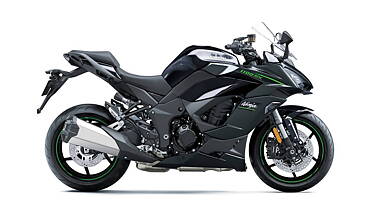
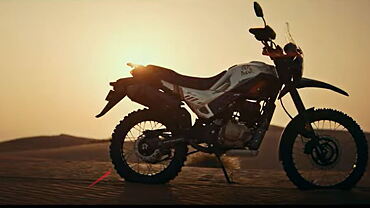
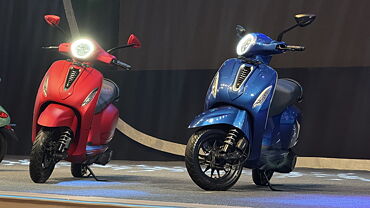

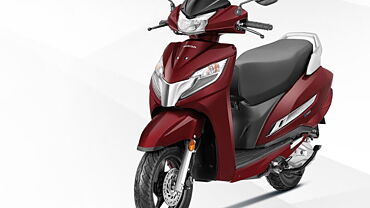
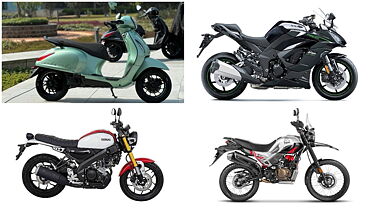


![Ducati Multistrada 1260 [2018-2019] Exterior Ducati Multistrada 1260 [2018-2019] Exterior](https://imgd.aeplcdn.com/199x112/bw/ec/35548/2018-Ducati-Multistrada-1260-S-Launch-Ride-Review-132659.jpg?wm=2&q=80)
![Ducati Multistrada 1260 [2018-2019] Exterior Ducati Multistrada 1260 [2018-2019] Exterior](https://imgd.aeplcdn.com/199x112/bw/ec/35564/018-Ducati-Multistrada-1260-Pikes-Peak-Launch-Ride-Review-132746.jpg?wm=2&q=80)
![Ducati Multistrada 1260 [2018-2019] Exterior Ducati Multistrada 1260 [2018-2019] Exterior](https://imgd.aeplcdn.com/199x112/bw/ec/35564/018-Ducati-Multistrada-1260-Pikes-Peak-Launch-Ride-Review-132748.jpg?wm=2&q=80)
![Ducati Multistrada 1260 [2018-2019] Action Ducati Multistrada 1260 [2018-2019] Action](https://imgd.aeplcdn.com/199x112/bw/ec/35564/018-Ducati-Multistrada-1260-Pikes-Peak-Launch-Ride-Review-132761.jpg?wm=2&q=80)
![Ducati Multistrada 1260 [2018-2019] Action Ducati Multistrada 1260 [2018-2019] Action](https://imgd.aeplcdn.com/468x263/bw/ec/35564/018-Ducati-Multistrada-1260-Pikes-Peak-Launch-Ride-Review-132762.jpg?wm=2&q=80)

